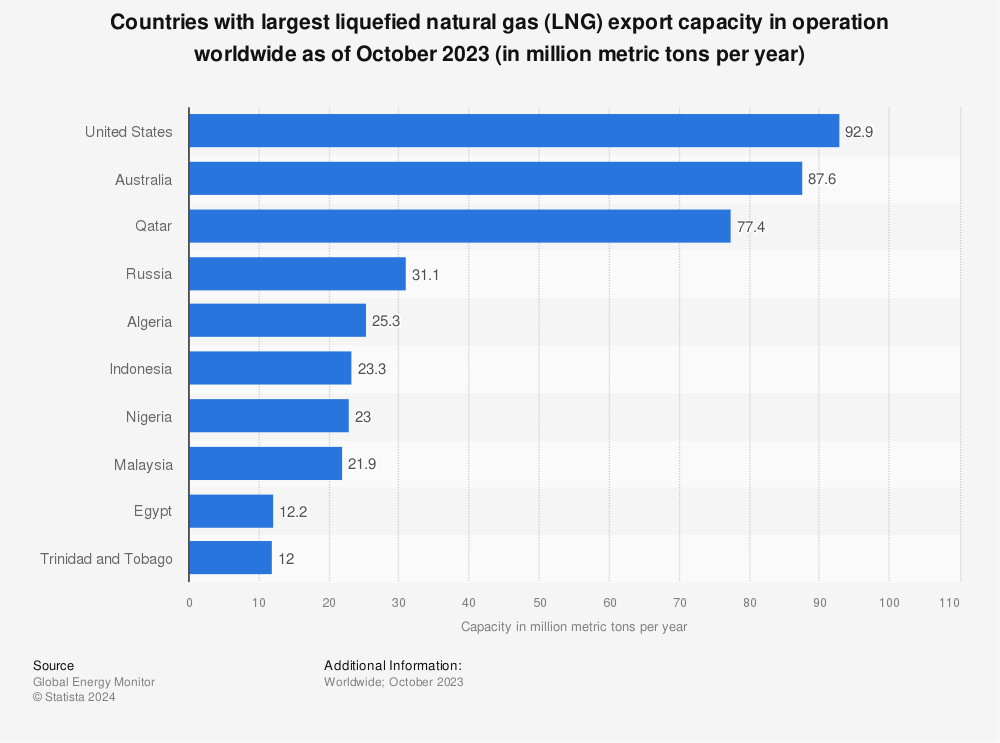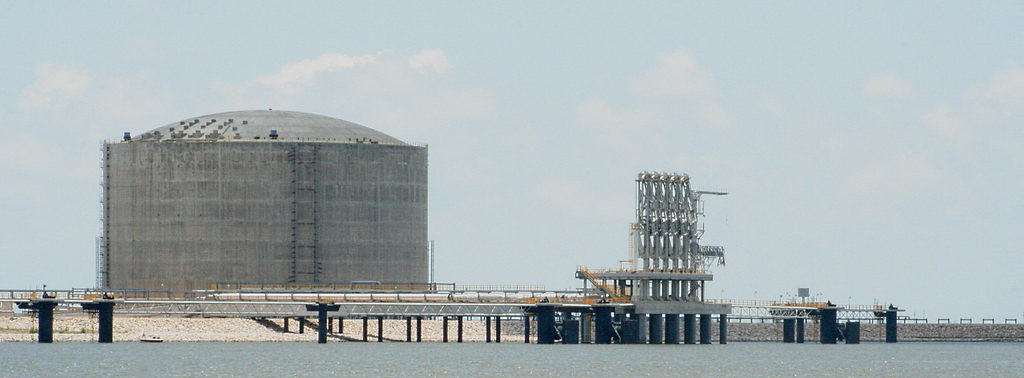Liquefied Natural Gas (LNG) is a valuable resource. With the high demand and a turbulent global economy in recent years, there’s much to dissect within the LNG market.
To learn more about the rise and current state of LNG in 2022, continue reading below.
What Is LNG?
Liquefied Natural Gas, or LNG for short, is a type of natural gas that’s been changed to a liquid form. It was transformed because natural gas is easier and safer to transport in its liquid state.
Natural gas is cooled to around negative 162° degrees Celsius (-260 degrees Fahrenheit) to create clear, colourless, and non-toxic LNG.
In this liquid form, natural gas takes up 1/600th of its original space. In other words, natural gas is shrunk 600 times, making it much easier to move and store the gas when pipeline transport isn’t an option.
Methane (CH4) is the main ingredient of LNG, although it also includes tiny quantities of ethane, propane, butane, and nitrogen.
How Does LNG Work?
As we touched upon earlier, LNG is mainly used to transport natural gas from one place to another. Exporters often turn to LNG when shipping to other countries and when transporting across bodies of water.
There are two main ways to liquefy natural gas. These are:
- The Cascade Process. This process refers to the cooling of one gas via another gas. This results in a cascading effect.
- The Linde Method. This method involves regenerative cooling. Natural gas is compressed, cooled, and expanded to a certain degree. Eventually, it becomes a liquid.
Although LNG is best thought of as a convenient way to transport gas, it has been gaining mainstream traction for other uses. For example, the automotive industry has begun looking at the usefulness of gas as fuel for specific combustion engines.
What Is the LNG Regasification Process?
As mentioned earlier, natural gas can be converted to liquefied natural gas for easy transport. When it reaches its destination, it can be turned back into its original gaseous state through the process of regasification.
Where in the LNG Value Chain Does Regasification Happen?
The regasification process often – but not always – occurs at big import terminals where LNG carriers drop their cargo. Other times, the LNG can be transported further by truck, smaller ships, or by train and then regasified closer to the consumers.
How Does Regasification Happen?
At the regasification plant, a heat exchanger with seawater will be used. This will serve as the heat medium that helps heat up the natural gas to change it from its liquid state back to its gaseous state. Air vaporizers may also be used to push air through heat exchangers and vaporise the LNG. During times of high demand, the regasification may be sped up with the help of underwater burners.
What Infrastructure Is Involved in Regasification?
Typically, regasification would take place on an on-shore facility; however, floating regasification solutions are becoming increasingly prevalent these days.
Recent Price Development of LNG vs. Natural Gas
The US Energy Information Administration (US EIA) stated that the natural gas prices remained relatively high throughout 2022 because of lower-than-normal natural gas inventories due to several factors that affected both supply and demand. Natural gas spot prices at the U.S. Henry Hub benchmark in Louisiana were at an average price of over eight dollars per million British thermal units back in May 2022.
The consumption of natural gas in the US electric power sector stayed high despite the high natural gas prices. Normally power plants in the US electric power sector would consume more coal as natural gas prices soar. But they’ve been unable to do that recently because of supply constraints in the coal market.
U.S. exports of LNG have also remained high, partly due to the ongoing combat in the Ukraine.
Who Are the Main Importers and Exporters of LNG?
In 2021, the world’s largest exporter of LNG was Australia, with an export volume of over 100 billion cubic metres. At the same time, Qatar ranked second.

Find more statistics at Statista
In terms of imports, China ranked first as the world’s biggest LNG importer in 2021. In 2021 alone, China imported nearly 110 billion cubic metres of liquefied natural gas. Coming at a close second was Japan, with imports at roughly 100 billion cubic metres in 2021. The total global trade volume in 2021 was estimated to be 516 billion cubic metres.
The LNG Market During the Russian-Ukrainian Crisis
During the Russian-Ukrainian Crisis of 2022, Al Jazeera reported that it had been a common occurrence for LNG vessels to queue up outside European import terminals as they chase the premium market for LNG in 2022.
These vessels have the incentive to hold their positions, as colder weather nearing the end of each year tends to increase energy demand and drive up prices.
The number of LNG tankers in European waters has doubled in the months just before the winter.
Russia has responded to Western sanctions by decreasing the supply of natural gas to certain European countries. These European countries turned to LNG as a substitute.
What Is Boil-off Gas?
Since natural gas is a by-product of oil exploration and processing, it has a lower density compared to traditional fuels. This makes it more difficult to transport.
As we’ve discussed, liquefying the natural gas makes it easier, safer, and more cost-efficient to transport gas across vast distances where pipelines aren’t available or viable. LNG is usually stored and transported in tanks and is loaded on vessels.
Although these tanks are insulated, a small amount of warming can’t be prevented. This warming causes the LNG cargo to evaporate when it reaches its natural boiling point. This natural and unavoidable evaporation process is known as boil-off and results in the generation of boil-off gas. This gas needs to be removed to preserve the tank’s pressure.
Several sources may cause or create the warming that’s responsible for the formation of boil-off gas. These sources include:
- Tank equilibrium changes
- Atmospheric pressure changes
- Mechanical heat input from pumps
- Heat leaks into bulk storage tanks
- Displaced vapours during ship offloading
Final Thoughts
To recap, we’ve discussed what LNG is, what it’s used for, the processes involved in the supply chain, as well as the current state of LNG in 2022.
To learn more, check out the other articles on our website. And for a cutting-edge CTRM system that fully supports the LNG specifics, contact us today to book a free demo of Comcore.
About ComFin Software
Since 1997, ComFin Software has been trusted as a global leader for affordable, comprehensive, and agile financial risk management software solutions – categorised as CTRM (Commodity Trading and Risk Management). ComFin Software has helped companies across the globe to minimise their exposure to volatile markets by arming them with the knowledge, resources, and administrative processes they need to perform commodity trading successfully.
With the CTRM solution Comcore™ you will have the perfect tools to maximise your profits by minimising your financial risks.
Tired of dealing with paperwork, or maintaining, updating, and reviewing multiple spreadsheets? The Comcore™ system helps you streamline everything from trading futures and options to their underlying commodities (paper and physical markets).
The complete Comcore™ software is available in 108 languages.
Furthermore, ComFin Software is recognised for its ability to provide consulting services in all aspects of commodities trading.
For detailed information go to www.comfinsoftware.com


